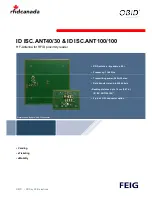
Time-based IO basics
2.6 Technical implementation
High-precision input/output with Time-based IO
Function Manual, 11/2019, A5E33454822-AC
21
TIO instructions in the isochronous OB
The TIO instructions must be called in a "Synchronous Cycle" or "MC-PostServo" OB.
You can find additional information in the chapter Programming (Page 27).
Note
The TIO instructions also support geared down isochronous mode. With a clock reduction
ratio, the application cycle is longer than the send clock.
Note
The TIO instructions must be called in an "MC-PreServo" OB.
If you use an OB of the "MC-PostServo" type, you can decide separately for each TIO model
whether it is used with Motion Control technology objects or with TIO instructions.
If you call the TIO instructions in an "MC-PostServo" type OB, you need to use the IPO
model and also cannot use any reduction ratio.
Calling TIO instructions in an OB of the type "MC-PostServo" with reduction ratio
"MC-Servo" can result in incorrect calculation of time stamps.
Modes for updating the process image
In isochronous mode, you can influence the order of the update of the process image
partition of the input and output data. In doing so, you can select the following program
execution models:
●
IPO model (application cycle factor = 1)
●
OIP model (application cycle factor >= 1)
The abbreviations I, P, O stand for the following processes: I = Input, P= Processing,
O = Output.
Additional information on the application cycle factor is available in the PROFINET with
STEP 7 (
http://support.automation.siemens.com/WW/view/en/49948856
) Manual.
Summary of Contents for SIMATIC ET 200AL
Page 2: ......
Page 143: ......
Page 218: ......
Page 250: ......
Page 296: ......
Page 337: ......
Page 365: ......
Page 392: ......
Page 419: ......
Page 451: ......
Page 483: ......
Page 597: ......
Page 648: ......
Page 702: ......
Page 739: ......
Page 781: ......
Page 804: ......
Page 828: ......
Page 853: ......
Page 880: ......
Page 906: ......
Page 996: ...Diagnostics ...
Page 1121: ......
Page 1565: ......
















































